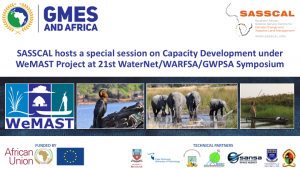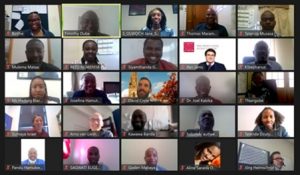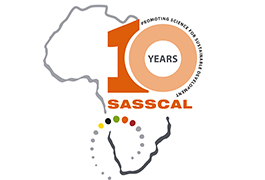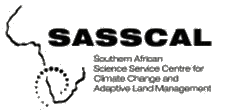
SASSCAL was well-represented at the 21st WaterNet / WARFSA/GWPSA Symposium to create awareness of initiatives such as the SASSCAL Graduate Studies Programme in ‘Integrated Water Resources Management”, the SASSCAL WeatherNet, and other SASSCAL activities like the SASSCAL Dam and Reservoir Atlas, and the WeMAST initiative. WeMAST (Wetland Monitoring and Assessment Service for Transboundary Basins in Southern Africa) is an initiative under the GMES and Africa Support Programme, and is funded jointly by the African Union and the European Commission. WeMAST aims to design, develop and operationalize an integrated online EO (earth observation) based platform that provides a wetland information service. WeMAST also has a strong capacity development component that is being facilitated by the University partners of the consortium. This capacity development pillar aims to ensure that the huge potential of earth observation technology and techniques is fully recognised and explored by decision makers for the sustainable management of wetlands in southern African.
On the first day, SASSCAL hosted a WeMAST Capacity Development Special Session. Through WeMAST, SASSCAL funds six Master students and two Doctoral students.
Prof Timothy Dube, the Chair of the Special Session, welcomed the panellists and the attendees and elaborated on its importance in capacity development, skills transfer and wetlands conservation. The SASSCAL Executive Director, Dr Jane Olwoch opened proceedings with a warm welcome and an overview of WeMAST activities and its alignment to SASSCAL and other regional initiatives, linked to natural resources monitoring and assessment. The session continued with an address by the WeMAST work package coordinator of capacity development, Dr Kawawa Banda, from UNZA. Dr Banda introduced attendees to the WeMAST initiative and provided insight into the capacity development component of the programme.
After introductions and openings, the chair, Prof Timothy Dube from UWC gave SASSCAL funded opportunity to present the research they are conducting for their Master and PhD thesis’. The following thesis work was presented:
- Tatenda Dzurume (Master) (UWC) – Use of multispectral satellite data to assess impacts of land management practices on wetlands in the Limpopo Transfrontier River Basin, South Africa
- Siyamthanda Gxokwe (PhD) (UWC) – Spatial characterization and mapping of coexisting wetland types in the Limpopo Transboundary River Basin, South Africa
- Mulema Mataa (Master) (UNZA) – Assessment of river – groundwater interactions in the Barotse Floodplains
- Botlhe Matlhodi (PhD) (UB) – Modelling past and future land use land cover dynamics in the Gaborone dam catchment, upper Limpopo river basin using CA-Markov model
- Tatenda Musasa (Master) (MSU) – Assessing the sustainability of land uses in Driefontein and Intunjambili wetlands, Zimbabwe
- Keto Ngwenya (Master) (MSU) – Stakeholders’ knowledge and use of remote sensed data in the assessment and monitoring of Driefontein and Intunjambili wetlands’ ecological conditions
- Victoria Ngwenya (Master) (UNZA) – Effects of flooding regimes on macroinvertebrates communities in the Barotse Floodplains
- Kgabo Humphrey Thamaga (PhD) (UWC) – Impacts of land use land cover change on wetland productivity and hydrological systems
Every presentation was followed by active and constructive discussions aiming to reach more clarity and supporting students in their future work. A good quality and diversity of presentations was noted and commended by the audience. The special session attracted a considerable attendance from different sectors, demonstrating a respectable global footprint and underlining the relevance of the project towards wetlands monitoring and assessment.

Figure 1: Snapshot of attendees during the opening of the Special Session on WeMAST Capacity Development, including SASSCAL Executive Director, Dr Jane Olwoch, SASSCAL Director of Science and Technology, Dr Jörg Helmschrot and Special Session Chair, Dr Timothy Dube
SASSCAL also presented their joint research “Impact of climate on dam management in Namibia” during the “Changing hydro-climatic regimes and planning tools for climate resilient development pathways” session. The research is being conducted jointly between SASSCAL and the Namibian Water Corporation NamWater, and is still ongoing. Amongst others, the analysis of the precipitation of the dam catchment areas of Naute Dam, Omatako Dam and Von Bach Dam, demonstrated that in the past decade, there is an increase in frequency and severity of extreme precipitation events and droughts. More research will analyse the factors, besides precipitation, that influence dam inflows and need to be considered for dam management.




